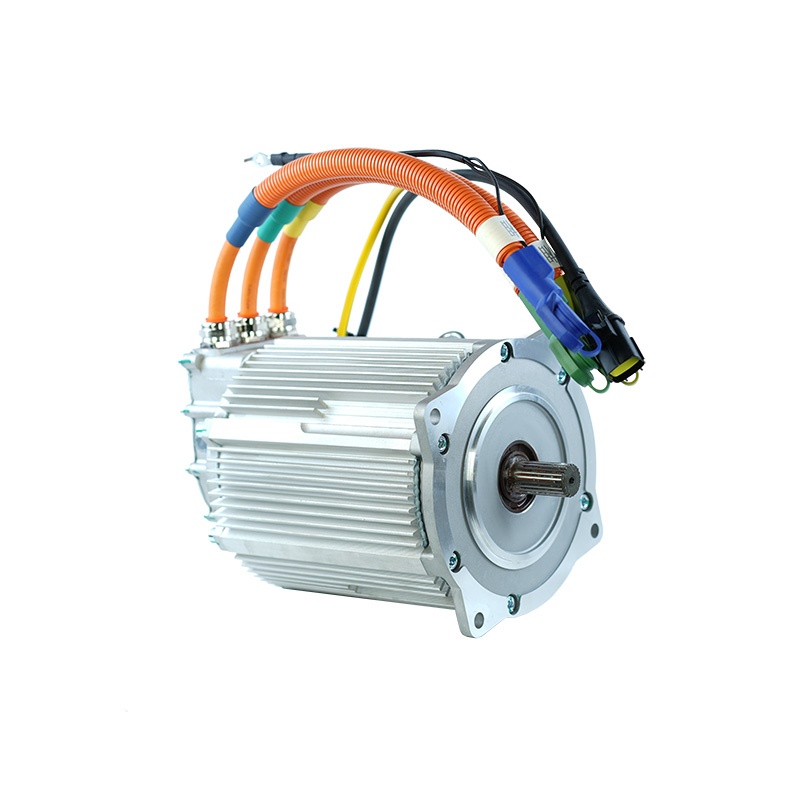How to determine whether the permanent magnet motor has lost magnetism?
Once the permanent magnet motor loses its magnetism, basically the only option is to replace the motor, and the repair cost is a lot. How to judge whether the permanent magnet motor has lost its magnetism? Let’s take a look below.
When the machine starts running, the current is normal. After a period of time, the current becomes larger. After a long time, the frequency converter will be reported as overloaded. First, you need to make sure that the air compressor manufacturer's inverter selection is correct, and then confirm whether the parameters in the inverter have been changed. If there is no problem with both, you need to judge by the back electromotive force, disconnect the machine head from the motor, perform no-load identification, and run to the rated frequency without load. The output voltage at this time is the back electromotive force. If it is lower than the value on the motor nameplate If the back electromotive force is above 50V, it can be determined that the motor is demagnetized.

1. Keep the permanent magnet motor working at rated current
The main reasons for the overload operation of the permanent magnet motor are due to the excessive load being driven, the voltage being too low, or the driven machinery being stuck. If the overload time is too long, the permanent magnet motor will absorb a large amount of active power from the power grid, the current will increase, and the temperature will rise. At high temperatures, the insulation of the permanent magnet motor will age and the magnets will lose magnetism. Therefore, when the permanent magnet motor is in operation, attention should be paid to regularly checking whether the transmission device is flexible and reliable; whether the concentricity of the coupling is standard; the flexibility of the gear transmission, etc. If stuck phenomenon is found, the machine should be stopped immediately to find out the cause and eliminate the fault before running again.
2. Always check whether the three-phase current of the permanent magnet motor is balanced.
For a three-phase AC permanent magnet motor, the difference between any one phase current of the three-phase current and the average value of the other two currents is not allowed to exceed 10%. Only in this way can the safe operation of the permanent magnet motor be maintained. If it exceeds, it indicates that the permanent magnet motor is faulty and must be checked. bright.
3. Check the temperature of the permanent magnet motor. Always check the temperature of the bearings, stator, casing and other parts of the permanent magnet motor for abnormal changes.
Check whether the bearings of the permanent magnet motor are overheated and lack oil. If the temperature rise near the bearing is found to be too high, stop the machine immediately and check whether there are cracks, scratches or defects on the surface of the rolling elements and raceways of the bearing, and whether the bearing clearance is too large and shaking. Whether the inner ring rotates on the shaft, etc. If any of the above phenomena occur, the bearings must be updated before work can be resumed.
4. Observe whether the permanent magnet motor has any vibration or loud noise.
If the permanent magnet motor vibrates, it will cause the load part connected to it to be non-concentric, causing the load of the permanent magnet motor to increase, causing overload operation and burning the motor. Therefore, when the permanent magnet motor is in operation, especially high-power permanent magnet motors, it is necessary to frequently check whether the anchor bolts, end covers, bearing glands, etc. are loose, whether the grounding device is reliable, and solve problems in a timely manner.
5. Keep the permanent magnet motor clean
When the permanent magnet motor is running, dust, water stains and other debris are not allowed within at least 3m around the air inlet to prevent it from being sucked into the motor and forming a short-circuit medium, or damaging the wire insulation, causing a short circuit and burning the motor. Therefore, it is necessary to ensure Only when the permanent magnet motor has sufficient insulation resistance and a good ventilation and cooling environment can the permanent magnet motor maintain a safe and stable working condition during long-term operation.



























 XINDA
XINDA